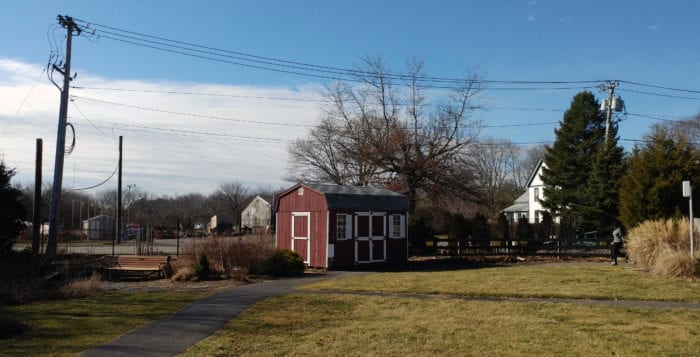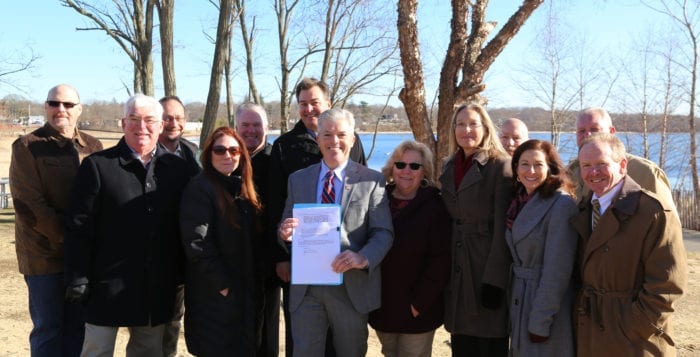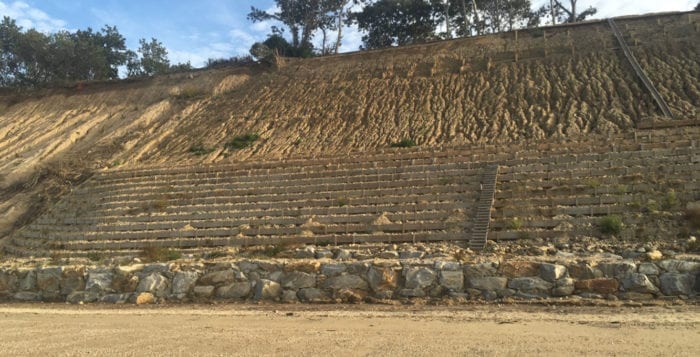A beloved local park is gauging the reception of a potential development.
Members of Heritage Trust in Mount Sinai are currently evaluating a proposal made by a Verizon representative last month to build a cellphone tower on the property.
“Aesthetically, we would want it to look nice, and we don’t want it to change the whole character at Heritage.”
— Lori Baldassare
According to Lori Baldassare, the nonprofit’s president, the group was contacted by Verizon Wireless consultant, Robert Monteleone, a few weeks before the trust’s annual meeting in early February.
Without a design or any specific plan yet in place, Baldassare said Verizon’s bare-bones pitch is to install a tower somewhere on a 0.7-acre stretch of property at 633 Mount Sinai-Coram Road to help eliminate a cellular “dead zone” in the area, where weak signals and dropped calls can create safety issues. More and more cell towers have popped up across the state in recent years as less residents hold onto their landlines, instead relying almost completely on their cellphones. Phone carriers, like Verizon and AT&T, are required to make sure dangerous coverage gaps are filled.
Baldassare said she and other Heritage members requested more information from Monteleone as to how obtrusive the proposed tower would be and exactly where the structure might be located on the scenic site, which features a playground, baseball field, walking path, gardens, a plant maze and mini-golf course.
“Do we want a cell tower in the park? Every tower I’ve seen has been very big, tall and noticeable with a big concrete base.”
— Ann Becker
“Aesthetically, we would want it to look nice, and we don’t want it to change the whole character at Heritage,” Baldassare said, hoping that the tower be built behind the Heritage Center building, where there are already tall poles and transformers installed. “We certainly don’t want it in front of our building.”
But a cell tower at Heritage would come with an added benefit, Baldassare said.
“Part of the reason we’re considering it is that the income generated from the cell tower — roughly between $2,500 and $3,500 a month — would go directly to Heritage Trust to help support our programs, activities and efforts at the park,” she said. “It would certainly be a help to us as we don’t get taxpayer money, and rely on donations.”
She said she was “cautiously pursuing” the idea.
“We’re trying to weigh out the pros and cons based on what comes back to us from Verizon,” Baldassare said. “We’re doing our due diligence.”
The topic came up during a March 5 Mount Sinai Civic Association meeting. Civic Association President Ann Becker led the discussion, raising questions and making clear to the public that no application for the cellphone tower has been submitted.
“Nothing has happened yet, but it’s now on our radar,” Becker said. “I guess the downside is, do we want a cell tower in the park? Every tower I’ve seen has been very big, tall and noticeable with a big concrete base.”
“This would be an example of the money going to a true community organization with low overhead and all the benefits directly applied to the community.”
— John Leonard
Vice President Brad Arrington said there are alternative models and size options available when it comes to towers.“Would there be room on a cellphone tower to share and cooperate with other providers?” asked park volunteer Fred Drewes, referring to the service of not just Verizon customers.
Becker said there is.
“If Verizon builds it and, say, Sprint rents from Verizon by paying an additional fee, there would be that additional benefit,” she said. “One tower, more money, less construction.”
Mount Sinai resident John Leonard said via Facebook that he would support the cell tower as long as the revenue went to the Heritage Trust, which he commended for being a 100 percent volunteer board.
“They have done amazing things,” Leonard said. “This would be an example of the money going to a true community organization with low overhead and all the benefits directly applied to the community. It’ll help this group continue doing great things for our region.”
But not all residents seem to be on board.
“It’s a horrible idea,” Robyn Blumstein said. “What an eyesore for a beautiful park.”
























